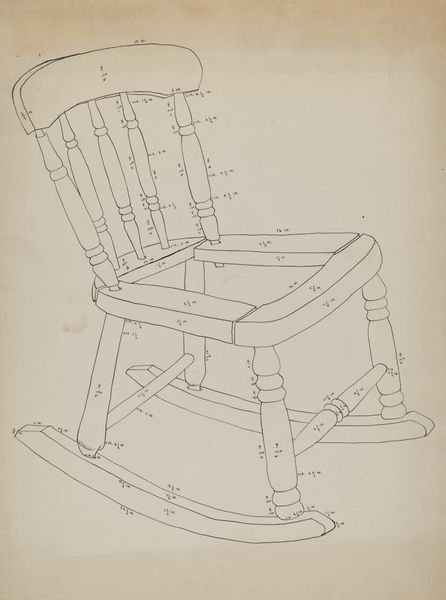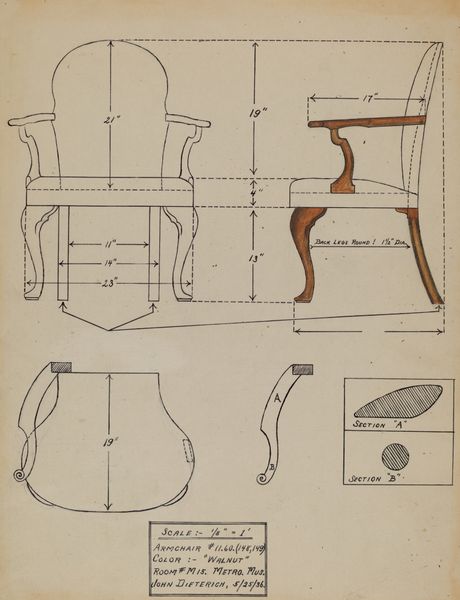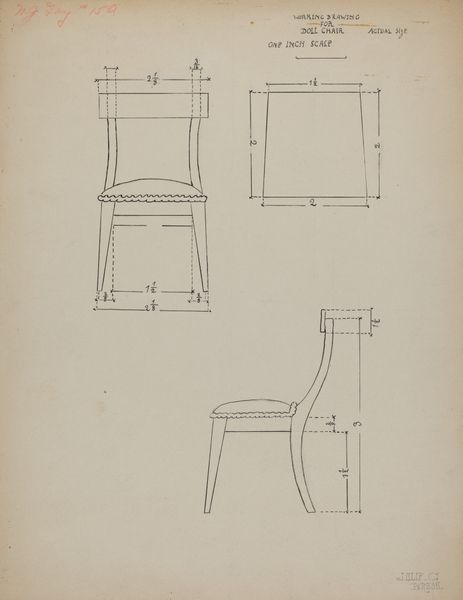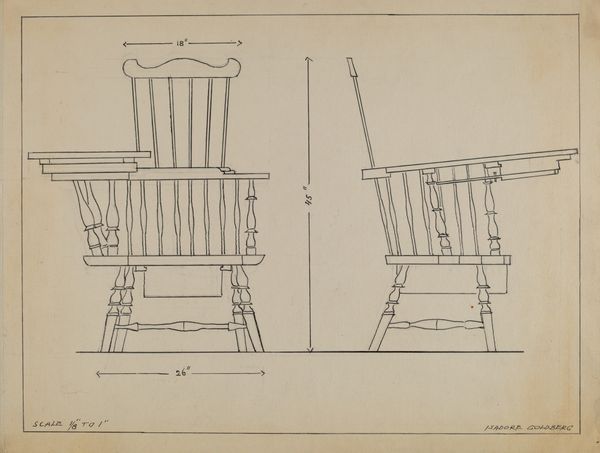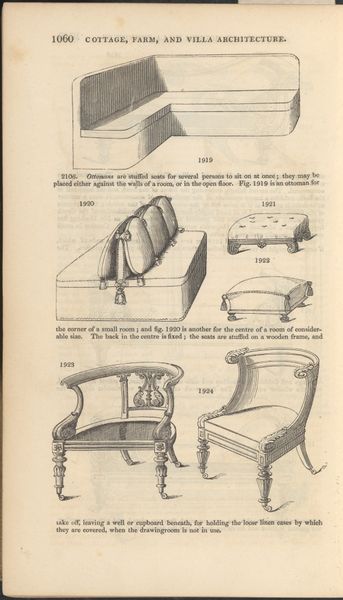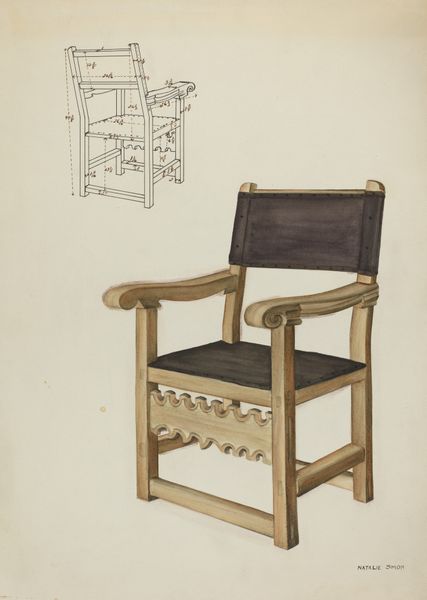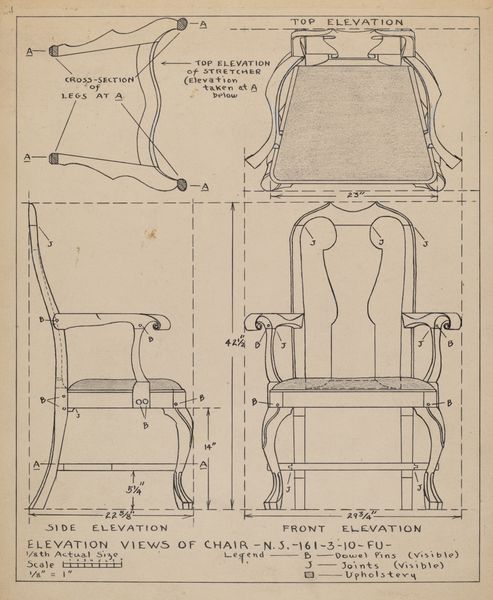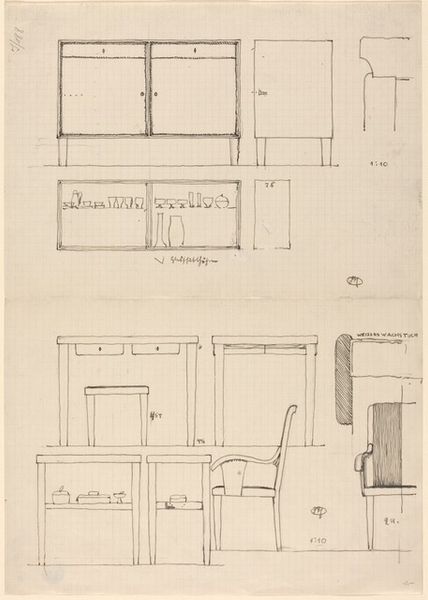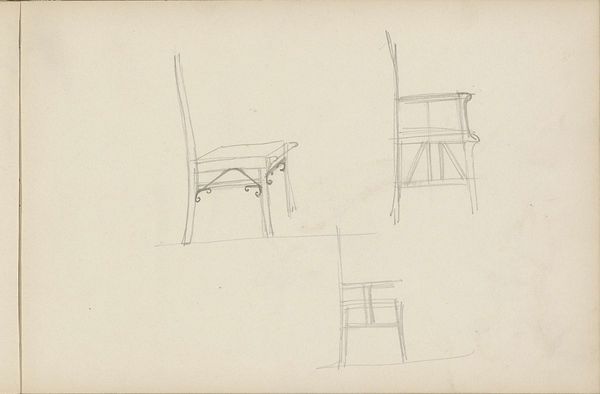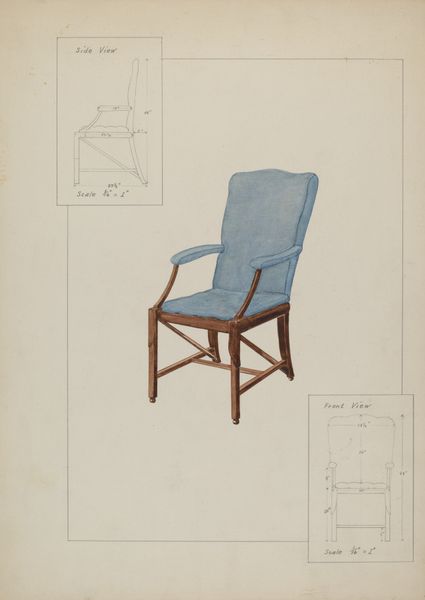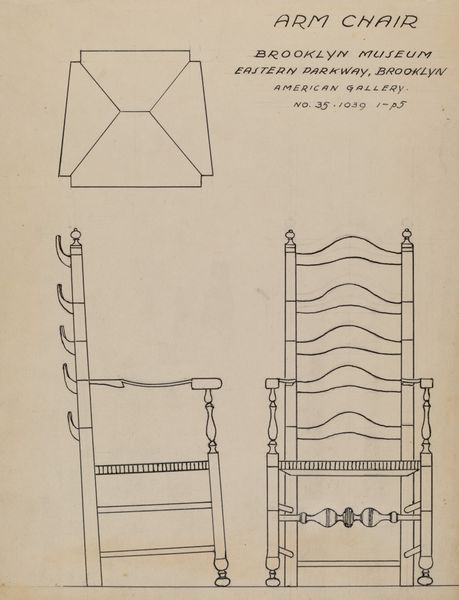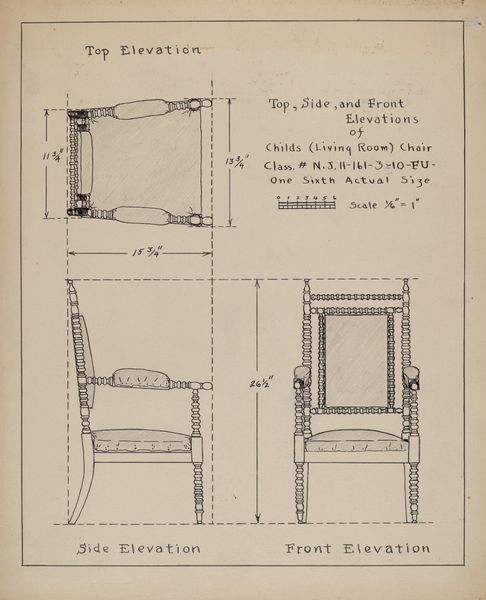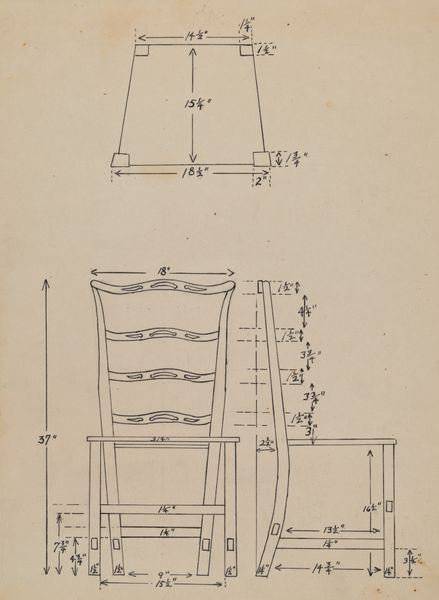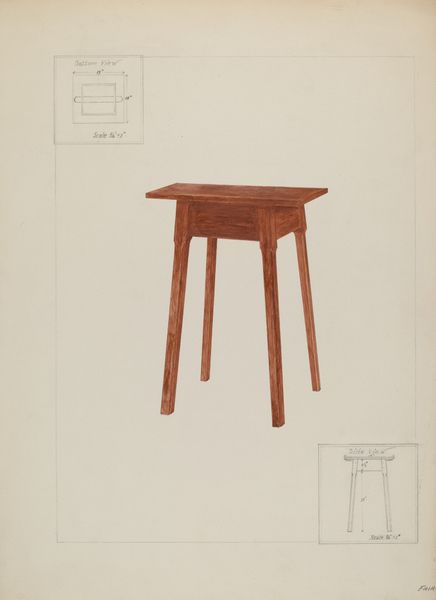
drawing, print
#
drawing
# print
#
form
#
geometric
#
line
#
academic-art
#
decorative-art
Dimensions: 12 5/8 x 9 13/16 x 1 5/8 in. (32 x 25 x 4.2 cm)
Copyright: Public Domain
Curator: This is "Designs of Furniture," created in the 19th century by William Smee & Son. It’s a drawing, likely a print, showcasing various chair designs. Editor: My first thought is how austere these designs appear. The stark lines and limited shading give a clinical, almost diagrammatic feel. Curator: Indeed. This wasn't meant as high art but rather as a catalogue or proposal. We should consider the socio-economic context—the burgeoning middle class demanding detailed craftsmanship. Each chair represents an aspiration to social mobility. Editor: From a formal perspective, note how the line work, though simple, precisely delineates each structural element. There is no embellishment to distract from the pure form of these objects. It feels like a direct manifestation of functional design. Curator: But 'function' isn’t a neutral term. The height and structure of these chairs, ostensibly for children, hint at a rigid social hierarchy and carefully monitored upbringing prevalent during that era. These are not simply chairs; they're instruments of socialization. Editor: That's fascinating. Still, I'm drawn to the geometric relationships at play here – the curves offsetting the strict orthogonal planes. They achieved remarkable complexity, given the visual restraint. Curator: And consider the materials—mahogany and birch mentioned in the annotations. The drawing doesn't convey this, but the selection speaks to imperial trade networks, resource exploitation, and power. This drawing silently participates in colonial narratives. Editor: You make a strong point. Though deceptively simple, each design becomes charged with the weight of history and societal norms that underpinned its creation. Curator: Precisely! It underscores the need to unpack even seemingly benign representations for their broader implications. We must challenge and deconstruct those assumptions. Editor: It's remarkable how looking closely at something’s structure and materiality can lead us to so many different interpretations. It gives a far better appreciation for the designer’s skill.
Comments
No comments
Be the first to comment and join the conversation on the ultimate creative platform.
